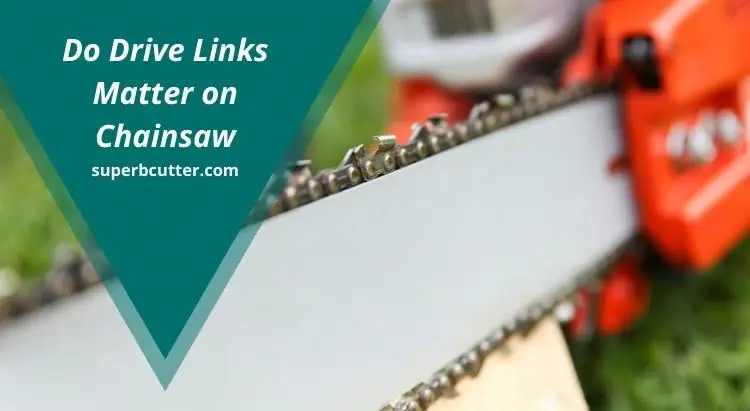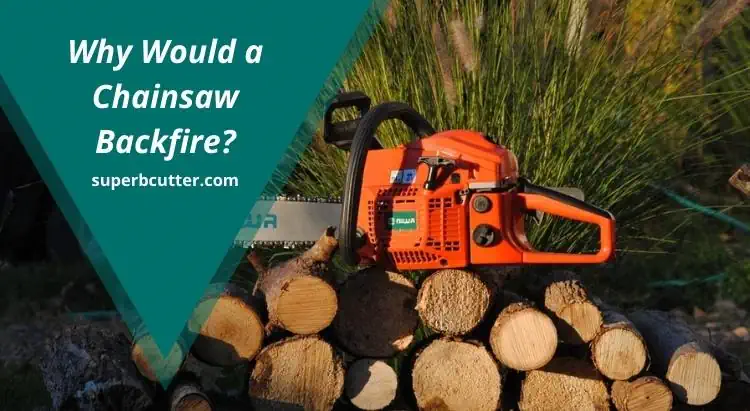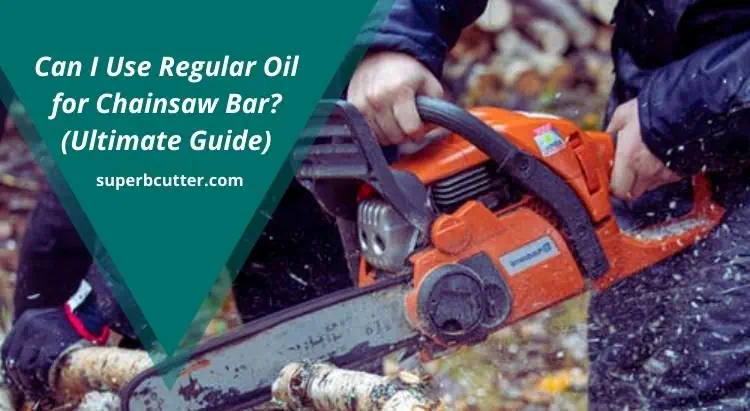Can You Cut Bamboo with a Chainsaw?
Bamboo is a popular plant due to its versatility and fast growth rate. However, cutting bamboo can be challenging due to its unique characteristics, such as strength, flexibility, and height. People have traditionally used hand tools such as machetes, saws, and axes to cut bamboo.
These tools can be effective but require significant physical effort, time, and skill. Alternatively, using a chainsaw for cutting bamboo has become increasingly popular. Chainsaws are known for their speed, efficiency, and precision, making them suitable for cutting bamboo.
In this article, we will explore whether you can cut bamboo with a chainsaw, the benefits of using a chainsaw for cutting bamboo, and the techniques and safety measures involved in the process.
Can you cut bamboo with a chainsaw? Yes, you can cut bamboo with a chainsaw. Using a chainsaw is one of the most efficient ways to cut bamboo. Chainsaws are known for their speed, power, and precision, making them ideal for cutting through tough materials such as bamboo.
Understanding Bamboo
Bamboo is a type of grass known for its rapid growth and hardy nature. It is a versatile plant used for various purposes, such as construction, furniture, and textiles. Bamboo is popular due to its strength, flexibility, and sustainability.
There are over 1,400 species, and they can be broadly classified into two types: running bamboo and clumping bamboo.
Running bamboo spreads aggressively through underground rhizomes, making it difficult to control and maintain. Clumping bamboo, on the other hand, grows in tight, non-invasive clusters and is easier to manage.
The characteristics of bamboo pose unique challenges when it comes to cutting it. Bamboo can grow to heights, with some species reaching over 100 feet. Its hollow stems are also tough, making it difficult to cut through them cleanly.
Bamboo fibers can also dull or damage blades quickly, requiring frequent sharpening. These challenges make cutting bamboo time-consuming and laborious, especially using traditional tools.
Can You Cut Bamboo with a Chainsaw? Types of Chainsaws and Their Features:
Several types of chainsaws available in the market can cut bamboo. These include gas-powered chainsaws, electric chainsaws, and battery-powered chainsaws. Each type of chainsaw has its own set of features and benefits.
Gas-powered chainsaws are the most powerful and versatile of the three. Their high horsepower and torque make them ideal for cutting through thick and tough bamboo.
However, gas-powered chainsaws are also the heaviest and loudest, requiring much physical effort and generating noise pollution.
Electric chainsaws are lightweight and quieter than gas-powered ones, making them suitable for cutting bamboo in residential areas. They are also more environmentally friendly, as they do not emit harmful gases or fumes.
Having that said, electric chainsaws have lower power and are limited by the length of their power cord.
Battery-powered chainsaws offer the portability and convenience of electric chainsaws without the limitations of a power cord. They are lightweight and easy to maneuver, making them a good option for cutting bamboo in hard-to-reach areas.
However, they have a limited battery life, which may not be sufficient for cutting through thick and tough bamboo.
Pros and Cons of Using a Chainsaw for Cutting Bamboo:
Using a chainsaw for cutting bamboo has several advantages, including speed, efficiency, and precision. Chainsaws can cut through bamboo much faster and more efficiently than traditional hand tools, reducing the time and effort required.
Chainsaws also offer greater precision, enabling users to make clean and accurate cuts. However, there are also some drawbacks to using a chainsaw for cutting bamboo. Chainsaws can be dangerous if not used correctly, posing a risk of injury to the user or those around them.
Chainsaws can also generate a lot of noise pollution and emit harmful fumes, which can be a concern in residential or indoor settings.
Choosing the Right Chainsaw for Bamboo Cutting:
When choosing a chainsaw for cutting bamboo, several factors should be considered. These include the bamboo’s thickness, the cutting’s location, and the user’s experience and skill level.
Gas-powered chainsaws are ideal for cutting through thick and tough bamboo, while electric and battery-powered chainsaws are better suited for cutting thin and soft bamboo.
The length of the chainsaw bar is also an essential consideration. Longer bars are better for cutting thicker bamboo, while shorter bars are more suitable for cutting smaller or thinner bamboo. The user’s experience and skill level should also be considered, as more powerful chainsaws require greater expertise to use safely and effectively.
Preparation for Bamboo Cutting with Chainsaw:
When cutting bamboo with a chainsaw, you must prepare it first. This will help complete the task efficiently and reduce the risk of injury.
Safety Precautions for Using a Chainsaw:
Using a chainsaw for cutting bamboo can be dangerous. It is crucial to follow appropriate safety measures to prevent injury or accidents.
The first step is thoroughly reading the chainsaw’s instruction manual and understanding its features and functions.
Other safety precautions to consider when using a chainsaw for bamboo cutting include wearing appropriate protective gear, such as eye and ear protection, gloves, and sturdy footwear.
It is also essential to maintain a safe distance from the chainsaw’s cutting area and avoid cutting with the tip of the chainsaw bar, which can cause kickback.
Protective Gear Required for Cutting Bamboo:
Protective gear is essential for safe and effective bamboo cutting with a chainsaw. Eye and ear protection are crucial to prevent eye and ear damage from flying debris and chainsaw noise.
Sturdy work gloves can help protect the hands from cuts and abrasions, while sturdy boots can protect the feet from falling bamboo and other hazards.
It is also recommended to wear long-sleeved shirts and pants to protect the arms and legs from scratches and cuts. A hard hat can protect the head from falling bamboo or other objects.
Setting Up the Cutting Area:
The cutting area should be set up appropriately before starting the bamboo cutting process. The area should be cleared of debris or obstacles interfering with the cutting process. It is also essential to mark the cutting area to ensure the bamboo is cut to the desired length.
Inspecting and Preparing the Chainsaw:
Before starting the bamboo cutting process, the chainsaw should be inspected and prepared to ensure it is in good working condition.
The chainsaw’s chain tension should be checked, and the chainsaw should be filled with the appropriate type of fuel and oil. The chainsaw’s cutting bar should also be inspected for damage or wear.
It is also essential to start the chainsaw in a clear and open area to ensure it functions correctly before starting the bamboo-cutting process.
Techniques for Cutting Bamboo with Chainsaw:
Cutting down large bamboo stems can be challenging, as the stems are usually thick and tough. It is essential to use the right technique to ensure a safe and effective cut. A chainsaw with a long bar is recommended for cutting large bamboo stems.
The first step is to identify the direction the bamboo stem is leaning and ensure a clear path for the bamboo stem to fall. The chainsaw’s chain should be started, and the chainsaw should be angled at a 45-degree angle to cut the opposite side of the bamboo stem approximately 1/3 of the way through.
Next, the chainsaw should be angled in the opposite direction to make another cut 1/3 of the way through. Finally, a straight cut should be made to complete the cut, and the bamboo stem should fall safely.
Cutting Small Bamboo Culms:
Cutting small bamboo culms is relatively easy and straightforward. A chainsaw with a smaller bar length can be used for this task. The chainsaw should be started, and the bamboo culm should be firmly placed. The chainsaw’s chain should be angled at a 45-degree angle, and a smooth and steady cut should be made.
Trimming and Shaping Bamboo with Chainsaw:
Trimming and shaping bamboo with a chainsaw can be challenging, as the chainsaw can quickly damage the bamboo. It is essential to use a light touch and a slow cutting speed to prevent damage. The chainsaw’s chain should be angled at a 45-degree angle, and the cut should be made in small increments.
Methods to Avoid Damaging Bamboo:
To avoid damaging bamboo when cutting with a chainsaw, it is essential to use the correct technique and be patient. The chainsaw’s chain should be kept sharp to prevent damage to the bamboo, and the chainsaw should be used with a light touch to prevent gouging or cutting too deep into the bamboo.
Maintenance of Chainsaws for Cutting Bamboo:
Proper maintenance is required after use to keep the chainsaw in good working condition. This includes cleaning and lubricating the chainsaw, sharpening the blades, and properly storing the chainsaw.
Cleaning and Lubricating the Chainsaw after Use:
After using the chainsaw for cutting bamboo, it is essential to clean and lubricate it to ensure its longevity. The chainsaw should be wiped with a dry cloth to remove debris or dirt.
The chainsaw’s chain should be removed, cleaned with a wire brush, and soaked in kerosene to remove any sap or debris. Once the chain is dry, it should be lubricated with chainsaw oil.
Sharpening the Chainsaw Blades:
Sharp chainsaw blades are essential for the efficient cutting of bamboo. Dull blades can cause damage to the bamboo and increase the chainsaw’s wear and tear.
Chainsaw blades can be sharpened using a chainsaw file or a chainsaw sharpener. The chainsaw’s chain should be removed, and the blades should be sharpened according to the manufacturer’s instructions.
Storage of Chainsaw:
Proper storage of the chainsaw is crucial to ensure its longevity. The chainsaw should be stored in a cool, dry place, away from direct sunlight and moisture.
The chainsaw’s chain should be removed and stored separately in a dry place. Before storing the chainsaw, it should be cleaned and lubricated as described above.
Benefits of Using a Chainsaw for Cutting Bamboo:
Cutting bamboo with a chainsaw offers several benefits over traditional tools like hand saws or machetes. Some of the main benefits of using a chainsaw for cutting bamboo are:
Time-Saving:
One of the most significant benefits of using a chainsaw for cutting bamboo is saving considerable time. A chainsaw can cut through bamboo stems quickly and efficiently, making it an ideal tool for those who need to quickly cut a lot of bamboo.
Cost-Effective:
Using a chainsaw to cut bamboo can also be more cost effective than traditional tools.
Chainsaws are generally durable and can last for many years, making them a good investment for those who frequently cut bamboo.
Additionally, a chainsaw can be more efficient in fuel consumption than other types of machinery.
More Efficient than Traditional Tools:
Chainsaws are designed to cut through wood quickly and efficiently, and this feature makes them ideal for cutting bamboo.
Compared to traditional tools like hand saws or machetes, chainsaws are much more efficient in speed and energy consumption.
This means cutting bamboo with a chainsaw can be less physically taxing and more efficient overall.
Possible Risks of Cutting Bamboo with a Chainsaw:
While cutting bamboo with a chainsaw can be efficient and time-saving, there are also some potential risks. Here are some of the main risks associated with cutting bamboo with a chainsaw:
The Danger of Kickback:
Kickback is a common risk associated with chainsaws, which occurs when the tip of the saw hits an object, causing the saw to jerk back toward the operator.
This can be especially dangerous when cutting bamboo, as the uneven shape and texture of the plant can increase the risk of kickback.
Risk of Injury to the Operator and Bystanders:
Using a chainsaw for cutting bamboo can also pose a risk of injury to the operator or bystanders.
The saw’s sharp blades can cause serious cuts or injuries if not used properly, and bamboo can also be unpredictable, with stems that can bend or snap unexpectedly during cutting.
Damage to the Chainsaw Due to Contact with Bamboo:
Bamboo’s dense and fibrous nature can cause significant wear and tear on chainsaw blades, leading to damage or dulling of the blade. This can also impact the chainsaw’s overall performance and longevity.
To mitigate these risks, it is essential to take proper safety precautions, such as wearing protective gear, setting up a safe cutting area, and inspecting the chainsaw before each use.
Additionally, it’s important to use the chainsaw correctly and maintain its blades to ensure they are in good working condition.
By taking these precautions, the risks of cutting bamboo with a chainsaw can be minimized, and users can safely and efficiently cut bamboo for various applications.
Safety Tips for Cutting Bamboo with Chainsaw:
When using a chainsaw to cut bamboo, it is crucial to prioritize safety to prevent accidents and injuries. Here are some safety tips to follow while cutting bamboo with a chainsaw:
Wear Protective Gear: Wear protective gear such as gloves, safety goggles, a hard hat, hearing protection, and non-slip boots. This protective gear can help prevent injury to the operator in case of an accident.
Set Up a Safe Cutting Area: To ensure a safe working environment, please remove any obstacles, such as rocks or debris, from the cutting area. Additionally, ensure there is enough space for the operator and any bystanders to move around safely.
Inspect the Chainsaw Before Use: Inspect the chainsaw before each use to ensure it is in good working condition. Check the chain tension, fuel levels, and chain oil levels. Also, check the blade for any signs of damage or wear.
Proper Handling of Chainsaws: Hold the chainsaw firmly with both hands, using the thumb and fingers to wrap around the handle securely. Keep the chainsaw away from the body while cutting, and avoid overreaching or bending the blade.
Avoid Kickback: Keep the chainsaw blade away from the ground and other objects to avoid kickback. Do not cut with the blade’s tip, and avoid cutting at awkward angles.
Precautions to Take While Working with Chainsaws: Avoid using the chainsaw for prolonged periods; take breaks to prevent fatigue. Do not operate the chainsaw above shoulder height or if standing on a ladder. Also, follow the manufacturer’s instructions for safe operation and maintenance of the chainsaw.
Following these safety tips, operators can minimize the risk of accidents and injuries while cutting bamboo with a chainsaw. Always prioritize safety, and take the necessary precautions to ensure a safe and successful cutting experience.
Frequently Asked Questions
Is it safe to cut bamboo with a chainsaw?
Cutting bamboo with a chainsaw can be safe if proper safety precautions include wearing protective gear, handling the chainsaw properly, and using the correct techniques.
Can any chainsaw be used for cutting bamboo?
Not all chainsaws are suitable for cutting bamboo. A chainsaw with a bar length of at least 18 inches and a powerful motor is recommended for cutting bamboo.
What is the best time of year to cut bamboo with a chainsaw?
The best time to cut bamboo is during the dry season when the sap is not flowing, typically in the fall or winter months.
What type of blade should I use for cutting bamboo with a chainsaw?
A chainsaw blade with large teeth and a low-profile design is recommended for cutting bamboo.
How do I maintain my chainsaw after cutting bamboo?
After cutting bamboo, cleaning and lubricating the chainsaw, sharpening the blades, and storing it properly is important.
Can bamboo damage my chainsaw?
Bamboo can potentially damage the chainsaw if it comes in contact with the chain or bar, causing it to become dull or damaged.
Can bamboo clog my chainsaw’s air filter?
Bamboo debris can clog the chainsaw’s air filter, reducing its performance. It is important to clean or replace the air filter as needed regularly.
Last Minute Thoughts!
So can you cut bamboo with a chainsaw?
Cutting bamboo with a chainsaw can be an efficient and cost-effective option compared to traditional tools. However, it also poses risks such as kickback and potential injury to the operator and bystanders.
It is important to take proper safety precautions and handle the chainsaw carefully to minimize these risks. Choosing the right chainsaw and maintaining it properly can also contribute to a safe and successful bamboo-cutting experience.
It is possible to cut bamboo with a chainsaw, but it requires proper knowledge, skill, and safety measures. By following the techniques and safety tips outlined in this article, you can safely and efficiently cut bamboo with a chainsaw, saving time and effort.



![Why Do Chainsaws Have Spikes? - [Beginner's Guide] 3 Why Do Chainsaws Have Spikes? – [Beginner’s Guide]](https://www.superbcutter.com/wp-content/uploads/2022/07/Why-Do-Chainsaws-Have-Spikes.webp)



